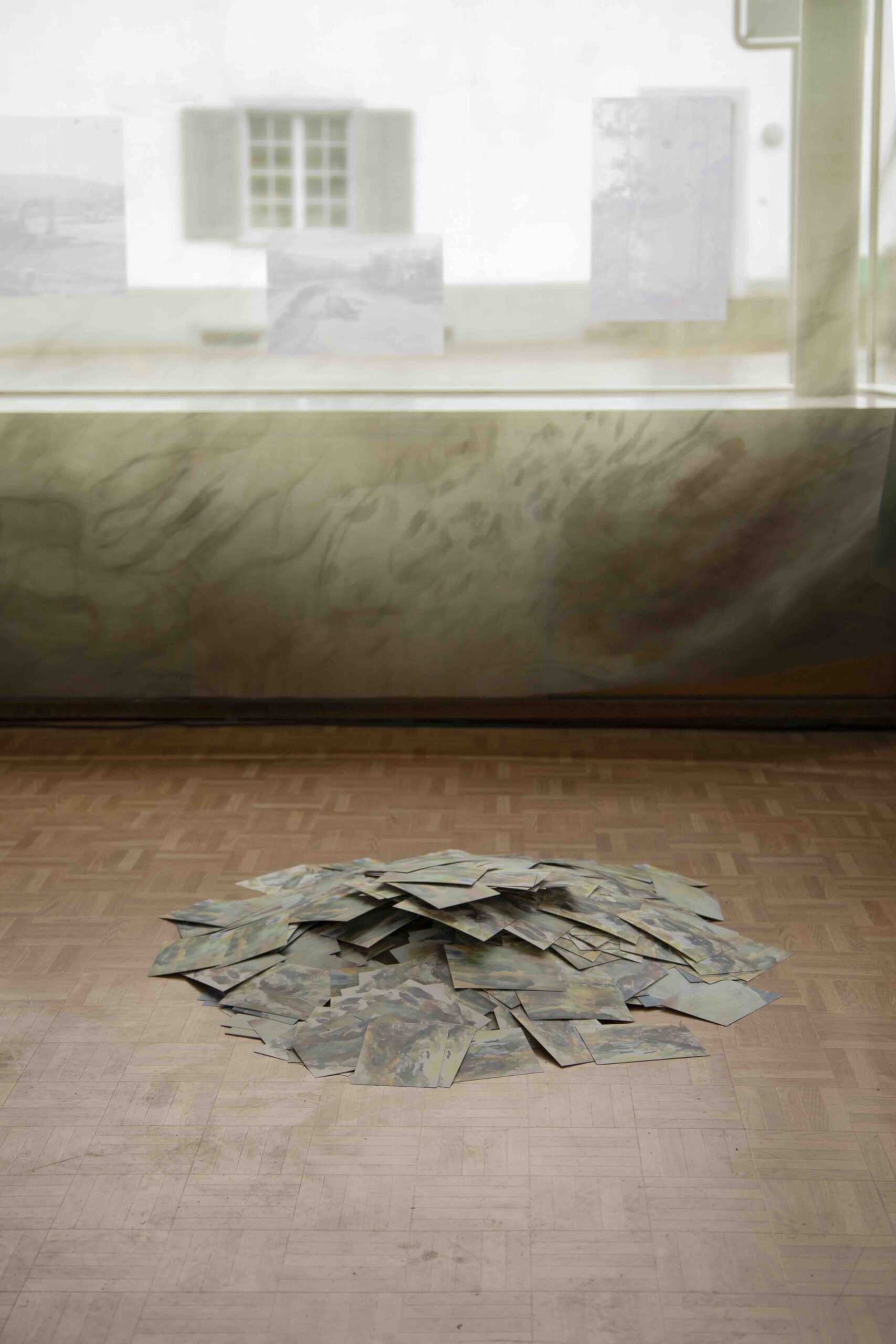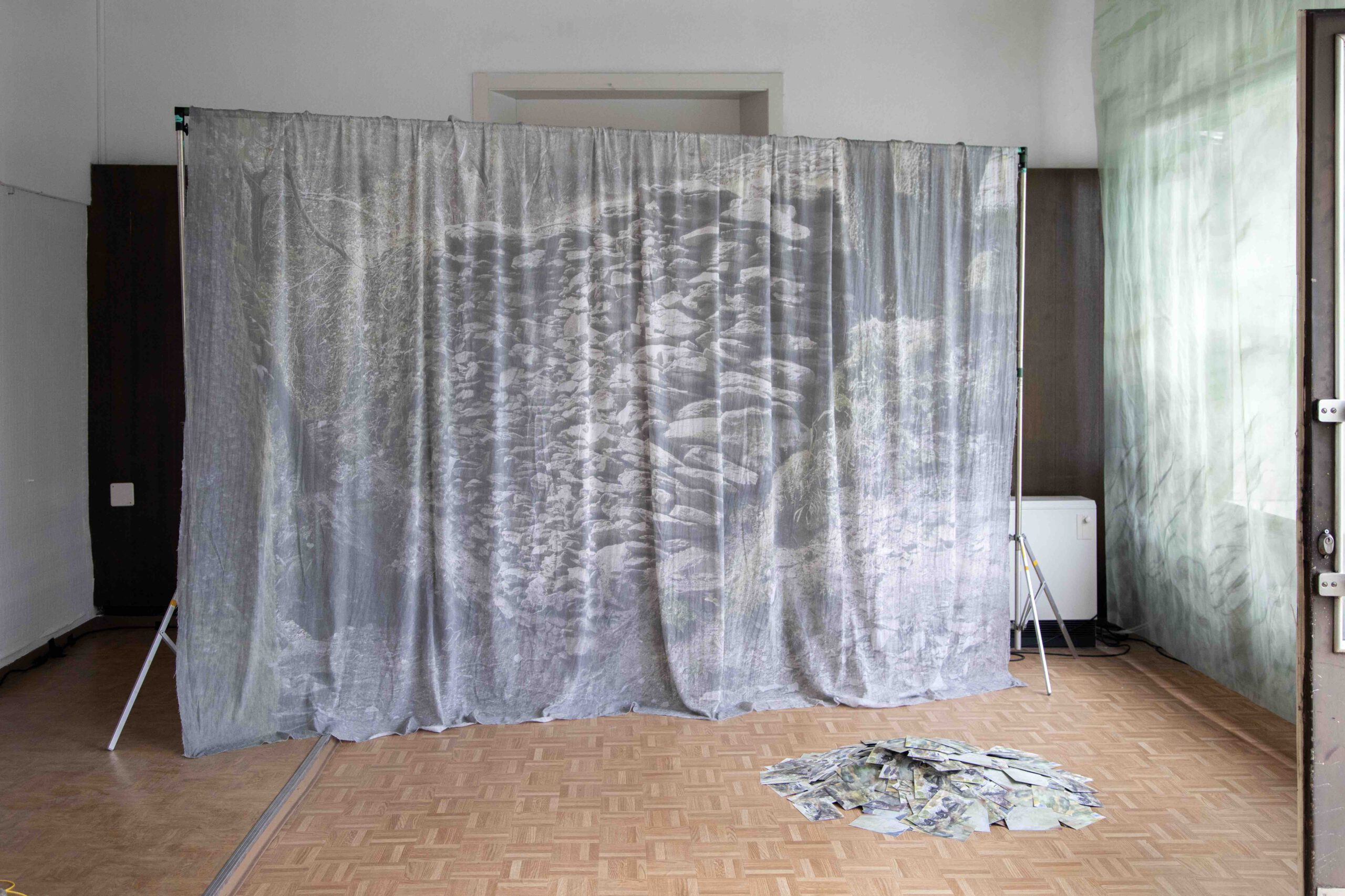


Many attempts at painting a river / viele versuche einen fluss zu malen Offsetprint, 800 postcards, 105 x 148 cm each 2019/20
The postcard pile shows a series of printed watercolor drawings representing the movement of the river ‘Le Gardon’ in France. The title of the work plays with a similar idea of try and error that reveals the limitations of such ventures. The poetic gesture of the work lies to us in the redundancy of drawing a liquid substance with watercolor paint, but also in the distribution of the image, when the postcards leave the exhibition space in a transcorporeal effort. A second part of the work is called An attempt to build a dry stone wall.
*
An attempt to build a dry stone wall / ein versuch eine mauer zu bauen digital print on organic fiber, curtain rail, wood approx. 360 x 220 cm 2020
*
An attempt to build a dry stone wall refers to the contrast between the image represented and the material on which the image appears. The weight of a stone wall is set in a thin, almost transparent material, linking to forms of representation as carriers of apparent histories. An old stone wall that gives insight into the site’s history appears also as an overgrown part of a present landscape. The technique of dry masonry does not require any addition of material besides what is found on site. The wall appears as a cartographic gesture as well as an architectural structure that enables agriculture in steep geography. By literally rebuilding on the ruins of a decayed wall, where nature-culture intersections get blurred, the work refers to the archaeological memory of the river valley as a site of co-existence, dependency, and control.
* Burble, gurgle, splash (settling at the river) group - exhibition t/w Marie Griesmar, Mélia Roger and Paula König at Dietikon Projektraum, 17.04. - 30.05.2021 text and curation by Dietikon Projektraum
Burble, gurgle, splash (settling at the river) is an exhibition on watery imaginaries and river politics. Focusing on the water systems that nourish our bodies and cities, we start from stories around the Limmat in order to address the planetary crisis of wounded waters. The question of how to think-with water was central in the exhibition planning, helping us understand the connection between representation and politics. Just like the fish, we are not in water but with water. This dependency means our bodies are implicated in what we conceptualize. If we acknowledge that the liquids that penetrate us feed multiple living organisms and travel through complex infrastructures a new set of ethical questions appears. This kind of sensibility is part of the watery imaginaries proposed in the exhibition.